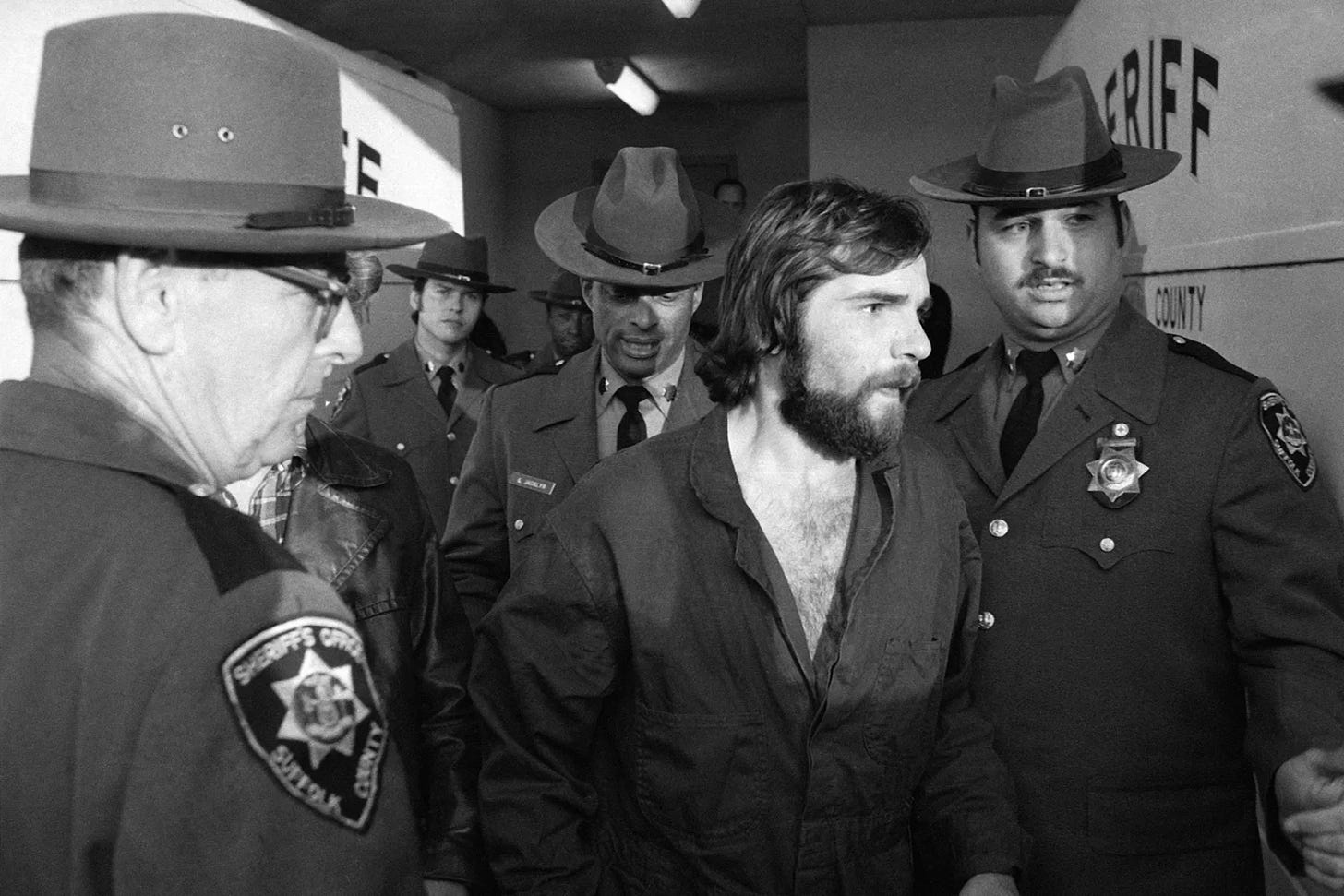On This Day in 1974: The Amityville Murders That America Turned Into Fiction
Before the ghosts, there was blood. On November 13th, a real family was executed in their sleep. The world chose to forget the truth.
Death Came Quietly to Ocean Avenue
On this day in 1974, a gruesome and calculated mass murder shattered the quiet of suburban Amityville, Long Island. The house at 112 Ocean Avenue, with its boat dock and quarter-moon attic windows, became a crime scene that would later be twisted into a sideshow. But on that November night, it was the place where six people were murdered in their beds by one of their own.
Ronald DeFeo Jr, known to friends as Butch, took a rifle and methodically shot his parents and four younger siblings. He did not act in a fit of rage, nor under any provable moment of madness. He planned the killings, executed them in cold blood, then covered his tracks as if nothing had happened. That is the real horror of Amityville, not green slime or ghostly whispers.
The victims were Ronald Sr, Louise, and their children Dawn, Allison, Marc and John Matthew. They were not names in a ghost story, they were a family, wiped out in a matter of minutes by someone who shared their roof. By morning, only Butch remained.
The Lies Began Almost Immediately
At 6pm on November 13th, Butch ran into a local bar and claimed his parents had been shot. His friend Bobby and several others rushed with him to the house. Bobby was the first to enter and found the bodies of Ronald Sr and Louise. The horror quickly deepened when they discovered the children, each murdered in their beds. No signs of struggle, no forced entry, no robbery. This was not a break-in. It was an execution.
Detectives arrived and began piecing together the scene. Butch told them he had left for work early and found the house silent later that day. He offered up a suspect quickly, saying his father had connections to organised crime. For a few hours, detectives considered that theory. But the evidence at the scene pointed elsewhere.
A gun box was found in Butch’s room. Ammunition matched the bullets in the victims. There were inconsistencies in his story, and he was the only person left alive in the house. Just two days after the murders, Butch cracked under questioning and confessed. He admitted to shooting each family member as they slept. He even told police how he had wrapped the weapon and his bloody clothes in a pillowcase and dumped them in a storm drain.
This should have been the end. But it was only the beginning.
Courtroom Drama Overshadowed the Crime
At his trial, Butch’s legal team took a calculated route. They admitted he had pulled the trigger, but claimed he was legally insane. They said he had no control over his actions, no memory of the night, no grasp on reality. On the witness stand, Butch claimed that holding a gun made him feel like God. He stared blankly, his beard wild and unkempt, and said he did not recognise his own mother’s face in photographs.
The prosecution was not buying it. Their psychiatrist testified that Butch had antisocial personality disorder, but knew exactly what he was doing. To prove it, they pointed to his actions after the killings. He had cleaned himself up, disposed of evidence, fabricated a story and pointed blame elsewhere. That was not insanity, it was deception.
The jury agreed. After a five-week trial, Butch DeFeo was found guilty of six counts of second-degree murder. He was sentenced to six life terms. He died in prison in 2021. But the damage was already done.
A Story Worth Selling
Just over a year after the trial, a new family moved into 112 Ocean Avenue. George and Kathleen Lutz bought the property at a cut price, knowing its history. Within 28 days, they moved out claiming the house was haunted. They described foul smells, cold spots, flies swarming, and supernatural forces tormenting them and their children. Doors slammed shut. Voices whispered. Green slime oozed from the walls.
They left the house and never returned. Months later, they sold the rights to their story. A book was published. Then came a film. Then came sequels and spinoffs. The Amityville Horror became a brand. The house that had once held the bodies of six murdered people was now a money-making machine for publishers, producers and ghost hunters.
Investigations into the Lutzes’ claims revealed little. Their priest denied much of what they said. Neighbours heard nothing. Researchers could not find physical evidence to support their accounts. Still, the story persisted. The line between tragedy and fiction vanished.
Amityville became known for demons and hauntings, not for the real event that sparked it all. It became shorthand for a haunted house. The true story, the one about a violent young man destroying his own bloodline, was buried beneath Hollywood smoke.
What Should Be Remembered
On November 13th, we should not remember spirits. We should remember six real people who went to bed and never woke up. We should remember how easy it was for the media to replace victims with characters, and grief with entertainment. We should remember that Ronald Sr, Louise, Dawn, Allison, Marc and John Matthew were not part of a horror film, they were murdered in their home by someone they trusted.
The truth about Amityville is not entertaining. It is ugly and brutal. It is about mental health ignored, red flags overlooked, and justice exploited. It is about how quickly we are willing to trade reality for sensation.
This was not a mystery. This was not a haunting. This was not a tale of evil spirits. It was a mass murder, and we owe it to the dead to remember it that way.


